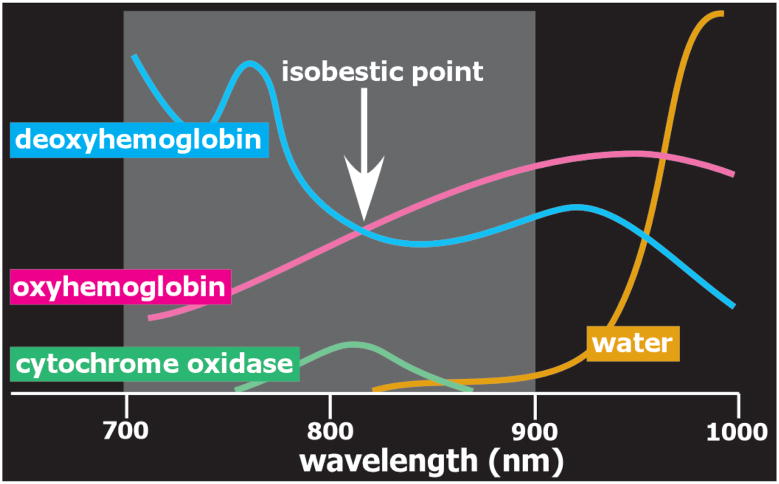Figure 2.
In the near-infrared range the major light-absorbing chromophores in tissue are water (gold), hemoglobin (oxyhemoglobin, pink; deoxyhemoglobin, blue), and cytochrome oxidase (green). Light penetrates tissue most deeply at wavelengths between ~700 –900 nm (gray band). Measurements are made at several wavelengths in order to be differentially sensitive to changes in oxyhemoglobin and deoxyhemoglobin. Measurement at an isobestic point (arrow), a wavelength equally sensitive to both, is sensitive to changes in total hemoglobin concentration.

